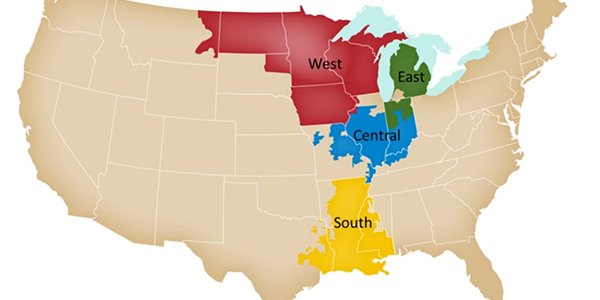By Amanda Durish Cook
MISO will take another crack at identifying a project that could provide an alternative to the constrained transmission path linking its North and South regions.
In its previous attempt to uncover an economic alternative to its transmission use agreement with MTEP 17 Proposal: 343 New Transmission Projects at $2.6B.)
But staff now have the “bandwidth” to take on the effort as part of this year’s market congestion planning study, MISO Planning Manager Matt Ellis told the Planning Advisory Committee on Tuesday. The study is designed to identify congestion-relieving projects that provide economic benefits exceeding the costs stemming from congested flowgates.
Ellis said MISO’s motivation to find possible solutions stems from both its research into showing that renewable growth is set to increase flows on the contract path, and the uncertainty around future terms and costs of its settlement agreement with SPP.
He said the RTO will reuse some underlying data from its 2017 footprint diversity study, which was exclusively aimed at finding a solution to alleviate the contract path. He said the lack of solutions from that effort isn’t deterring staff, pointing out that there are two years of fresh data on the contract path to study now.
“This is classic transmission planning. Many times, we look at the same flowgate multiple years in a row. The idea is ‘Hey, it’s a been a few years; let’s see what’s changed,’” Ellis said.
Beginning April 25, MISO will open a second, special project submission window for the market congestion planning study. Project submissions will be limited to solutions that physically cross the North-South interface and terminate on either side in MISO territory. Solutions must either eliminate or reduce settlement costs, or increase MISO’s regional transfer capability.
MISO will test project candidates against a scenario based on the possibility that the terms of its agreement with SPP continue in perpetuity. Ellis said MISO will also consider a sensitivity where the agreement is terminated and flows are again limited to the original 1,000-MW contract path. The agreement currently limits MISO line flows to 3,000 MW north-to-south and 2,500 MW south-to-north.
Ellis said MISO will likely develop a more specific list of design requirements. All project ideas will be due June 21.
While MISO intends to produce project recommendations by late August, Ellis stressed the research will be thoughtful and methodical. “Throughout this process, if we feel that we’re rushed … we have the flexibility to push back the timeline [and] add meetings. We’re not bound by an MTEP 19 decision point in this study.”





